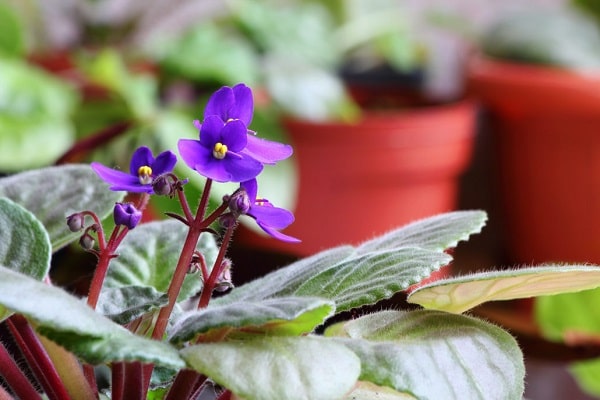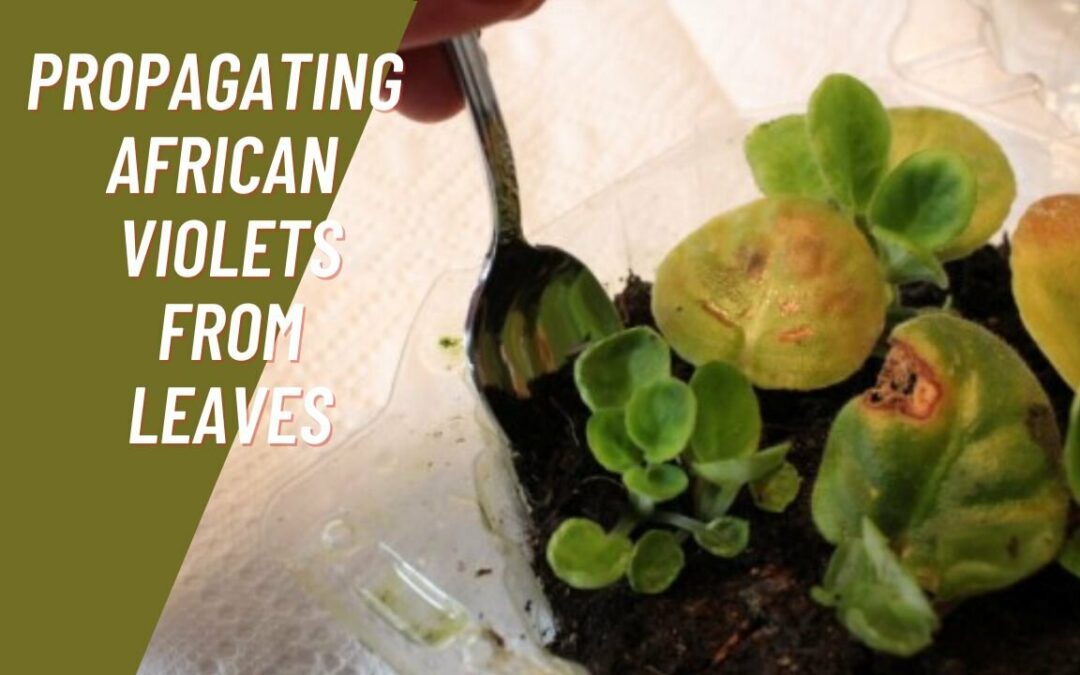Last Updated on June 9, 2023 by Md Deloar Hossain
African violets, scientifically known as Saintpaulia, are popular houseplants loved for their vibrant flowers and compact size. These attractive plants have gained large popularity among indoor gardeners thanks to their adaptability and few care requirements.
While African violets can be propagated through different methods, propagating african violets from leaves offers numerous benefits, including the opportunity to expand your collection and share these beautiful plants with others.
Quick Navigation
- 1 How to Propagating African Violets From Leaves
- 2 Leaf Selection and Preparation
- 3 Propagation Techniques
- 4 Rooting and Potting
- 5 Caring for Propagated African Violet Plants
- 6 Transplanting and Growing African Violet Plants
- 7 FAQs
- 7.1 Can any leaf of an African violet be used for propagation?
- 7.2 Q: Should I use rooting hormone when propagating African violets from leaves?
- 7.3 Q: What kind of growing medium should I use for rooting African violet leaf cuttings?
- 7.4 Q: How long do African violet leaf cuttings take to root?
- 7.5 Q: When should I transplant the rooted African violet cuttings into pots?
- 8 Conclusion
How to Propagating African Violets From Leaves

African violet leaf-cutting propagation requires a fundamental familiarity with the plant’s anatomy and leaf structure. African violet leaves are broad and fleshy, typically growing in a rosette formation. These leaves possess the natural ability to produce new plants, making them an ideal choice for propagation. However, several factors can influence the success of propagation, such as the leaf’s health, age, and variety.
Leaf Selection and Preparation
Selecting suitable leaves is crucial for successful propagation. Look for healthy leaves without signs of disease or damage. Leaves that are mature but not overly mature are generally the best candidates. Using a sharp, clean blade or scissors, carefully cut off the desired amount of leaves from the parent plant. It’s essential to trim the leaf stalk (petiole) to a suitable length and disinfect the tools to minimize the risk of introducing pathogens.
Propagation Techniques
African violets can be easily multiplied from leaf cuttings using one of several methods. The most common methods are the leaf-cutting method and the water propagation method.
The leaf-cutting method involves placing leaf cuttings in a suitable growing medium. This method can be enhanced by using a rooting hormone to stimulate root development. Creating a mini-greenhouse environment by covering the cuttings helps maintain the necessary humidity for successful rooting.
The water propagation method entails placing the leaf petioles in a water container, allowing them to develop roots. Monitoring the development of sources is crucial, and once they have sufficiently grown, the rooted cuttings can be transferred to a growing medium for further growth.
Alternative propagation methods, such as leaf division for larger leaves or propagating suckers from the parent plant, can also be explored depending on your preferences and the available resources.
Rooting and Potting
After selecting the propagation method and observing root development, rooting and potting the African violet cuttings is time. They provide the right conditions for root development, including maintaining appropriate humidity and temperature levels.
A suitable growing medium, such as a mix of peat moss, perlite, and vermiculite, should be chosen for potting the rooted cuttings. Carefully place the cuttings in the pots, ensuring the roots are adequately covered, and provide initial care, including watering and protecting them from direct sunlight.
Caring for Propagated African Violet Plants
Proper care is crucial for the health and growth of propagated African violet plants. Understanding their light requirements is essential, as they thrive in bright, indirect light but can suffer from direct sunlight. Watering techniques should keep the soil evenly moist, avoiding under-watering and overwatering.
Additionally, fertilizing regularly and providing the necessary nutrients will support their growth. It’s essential to monitor the plants for common issues such as pests or diseases and take appropriate measures to prevent or address them.
Transplanting and Growing African Violet Plants
Once the propagated African violet plants have established roots and shown signs of healthy growth, they can be transplanted into more permanent pots. This should be done appropriately, considering the plant’s size and root development. Select pots and potting mixes suitable for mature African violet plants, ensuring adequate drainage. Transplant the plants carefully, avoiding damage to the delicate roots, and provide ongoing care and maintenance for healthy growth.
FAQs
Can any leaf of an African violet be used for propagation?
A: Not all leaves are suitable for propagation. Selecting healthy leaves without any signs of disease or damage is best. Leaves that are mature but not overly mature are generally ideal for propagation.
Q: Should I use rooting hormone when propagating African violets from leaves?
A: Using the rooting hormone is optional but can help stimulate root development and increase the propagation success rate. It is particularly beneficial when using the leaf-cutting method.
Q: What kind of growing medium should I use for rooting African violet leaf cuttings?
A: A well-draining growing medium is crucial for successful root development. The most typical combination of peat moss, perlite, and vermiculite is potting soil. You can also use a commercial African violet potting mix.
Q: How long do African violet leaf cuttings take to root?
A: Rooting times can vary, but it typically takes 4 to 8 weeks for African violet leaf cuttings to develop roots. Patience is critical during this stage.
Q: When should I transplant the rooted African violet cuttings into pots?
A: It’s best to wait until the cuttings have a well-established root system before transplanting them. Plants can be safely transplanted into new containers once their roots have grown to approximately an inch in length and fresh growth is evident.
Conclusion
Propagating African violets from leaves is a rewarding and fulfilling process for plant enthusiasts. By understanding the anatomy of African violets, selecting suitable leaves, and employing various propagation techniques, you can successfully grow new plants and expand your collection. The benefits of propagating African violets from leaves extend beyond personal enjoyment, as you can also share these beautiful plants with friends and fellow gardening enthusiasts.

My name is Md Deloar Hossain and I’m the creator of Club Gardening, designed for all your gardening ideas, gardening product reviews, and a place to help you find the best gardening experience possible.


